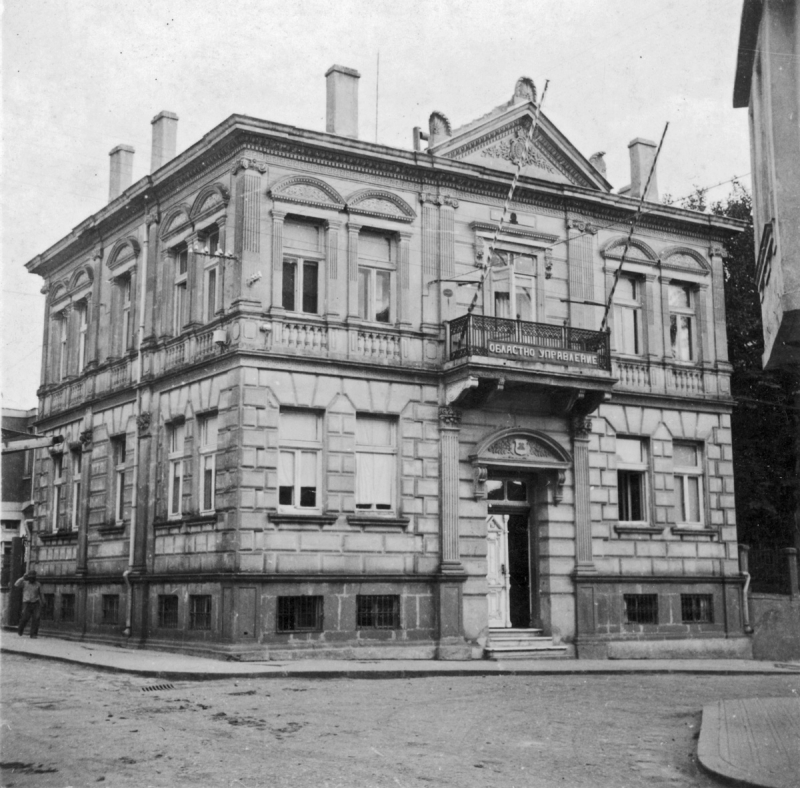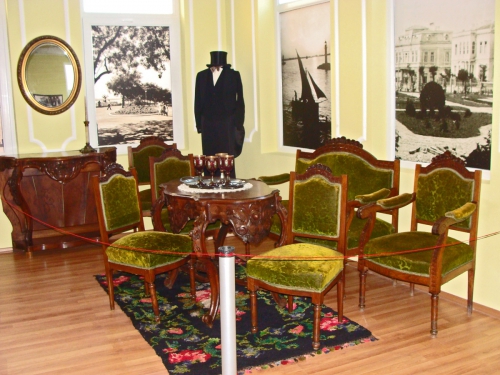A short chronicle of the history of the Historical Museum

When the State Museum in Burgas was established in 1946, it included only three departments: art, ethnography and archaeology. As far as there were exhibits from the period of the Ottoman rule, the Renaissance and the New Age, they are presented together with the ethnographic ones. Field work is still being organized to study the revolutionary struggles in the Burgas region and other moments in its history. In 1959 the structure of the museum expanded and it became a District, with new departments and more museum workers. The exhibits related to the historical past, inventoried in this period, are Church Slavonic books, personal belongings of participants in the liberation struggles of the Strandzha region, weapons, medals, seals, photos and more.
In the following years the museum work developed actively, the number of acquired objects increased, according to the aesthetics of the time - mostly those dedicated to the revolutionary struggles and the labour movement.
In 1981, in connection with the developed regional program "Burgas-1300", a derivative of the large-scale national program to celebrate 1300 years since the establishment of the Bulgarian state (681), new museum departments were opened at the Cultural and Historical Heritage Directorate. , in separate buildings, architectural monuments of culture.
On July 31, 1981, the ribbon of the Museum of the Revolutionary Movement was cut at 31 Lermontov Street. The opening ceremony was attended by officials, members of the public, and many guests, who were traditionally greeted with bread and salt. In the lobby of the building, by special order, the artist Ivan Kozhuharov created a mural, a "fresco" on a revolutionary theme.
Several sections were formed in the new museum - "Renaissance", "History of Capitalism and the Revolutionary Labour Movement" and "Socialist Construction". The curators study unexplored moments in the history of the district, the national liberation struggles, the Bulgarian-Soviet revolutionary relations and the participation of the workers in the September events of 1923, in the Patriotic War and others. The exposition fully illustrates the profile of the new museum. Many visitors are welcomed, extensive and thematic talks are held, open history lessons, meetings with revolutionary figures, party tickets are handed out, pioneers and chavdars are received. An interesting feature is that the floors of the halls are covered with carpet and they are entered with wide slippers, worn on the shoes.
The socio-economic and political changes that took place in 1989 had a dramatic effect on the museum's status quo. Most of the curators have been fired, the funds have been merged with new names, a completely new exhibition, such as style and content, is being prepared, emphasizing the history of the city in the second half of the 19th century. of the twentieth century. In 2000 a renovation was made again, an Icon Hall was opened on the ground floor and an exhibition of luxury items - examples of fine and applied art. Thematic and visiting exhibitions alternate.

Another complete change of the Historical Museum was made in 2014. A compact but fascinating exhibition of objects, photographs, texts and reconstructions traces the more important stages of the development of the city of Burgas. The collections of icons, weapons, decorations, art objects attract interested visitors. Unusual and curious is the "Wall of Letters" in the courtyard, which recreates some of the most ancient writing systems in the world. As scientific specialists, the curators constantly raise the level of the museum institution and defend the intellectual image of their city.
***
Usually one does not go to Burgas to visit something specific. Everyone travels their way to the city to immerse themselves in the inimitable atmosphere of cheerful sea happiness and freedom. We would be happy for our museum to be part of the Burgas adventure of more people! A different place, unadulterated and meaningful. Real.

Ivanka Deleva - Chief Curator of the History Department












